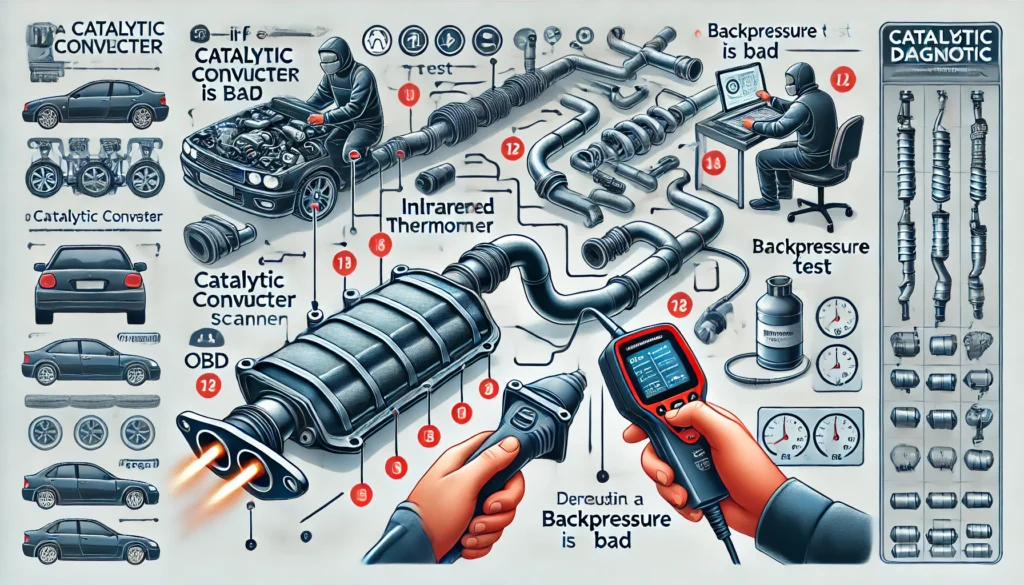The catalytic converter is a crucial component in your vehicle’s exhaust system, responsible for reducing harmful emissions. However, when it goes bad, it can lead to a host of problems, including decreased engine performance and increased emissions. In this guide, we’ll explore how to determine if catalytic converter is bad, covering the key symptoms and diagnostic methods.

Symptoms of a Bad Catalytic Converter
Recognizing the symptoms of a failing catalytic converter is the first step in diagnosing the issue:
- Reduced Engine Performance
- If your vehicle is experiencing sluggish acceleration or struggles to reach higher speeds, it could be due to a clogged or failing catalytic converter that restricts exhaust flow.
- Check Engine Light
- A common sign of a bad catalytic converter is the illumination of the check engine light on your dashboard. Diagnostic trouble codes (DTCs) like P0420 or P0430 often indicate catalytic converter issues.
- Unusual Exhaust Odor
- A failing catalytic converter may cause a strong sulfur-like smell, often described as similar to rotten eggs. This odor is a result of the converter failing to process exhaust gases properly.
- Rattling Noise
- If you hear a rattling noise coming from underneath your vehicle, especially during startup, it could be due to broken or damaged components inside the catalytic converter.
- Failed Emissions Test
- A bad catalytic converter can cause your vehicle to fail an emissions test, as it may no longer effectively reduce harmful pollutants.
How to Determine if a Catalytic Converter Is Bad
There are several methods to diagnose whether your catalytic converter is bad:
1. Use an OBD-II Scanner
- Connect an OBD-II scanner to your vehicle’s diagnostic port to retrieve any error codes. If you receive codes like P0420 or P0430, this indicates that the catalytic converter is not functioning efficiently.
2. Perform a Temperature Test
- Use an infrared thermometer to measure the temperature at both the inlet and outlet of the catalytic converter. In a healthy converter, the outlet temperature should be higher than the inlet. If the temperatures are similar or the outlet is cooler, the converter might be clogged or failing.
3. Conduct a Backpressure Test
- A backpressure test involves measuring the pressure in the exhaust system before and after the catalytic converter. High backpressure readings typically indicate a clogged or damaged converter.
4. Visual and Physical Inspection
- Inspect the catalytic converter for any visible damage such as dents, rust, or cracks. Additionally, tap on the converter and listen for any loose or rattling sounds, which could indicate internal damage.
5. Listen for Exhaust Leaks
- A bad catalytic converter can cause exhaust leaks, which may result in a hissing or popping sound from under the vehicle. Inspect the exhaust system for any signs of leaks, particularly around the catalytic converter.
Conclusion
Determining whether a catalytic converter is bad requires careful observation of symptoms and the use of diagnostic tools. By performing an OBD-II scan, temperature test, and backpressure test, along with a thorough visual inspection, you can accurately diagnose and address issues with your catalytic converter.
